Angkor Wat and authentic experiences on your trip to Cambodia is written by Camilla Kornerup

The experiences are waiting in line when you travel to Cambodia
I sit and look down at my three blue toenails. The one on the little toe is about to fall off, but the other two I think I will most graciously be allowed to keep, even though they now look like something that should be amputated.
My hiking boots stink of mould, and I still have marks from leech bites, beach fleas and mosquitoes. It's all just proof that I've just returned home Southeast Asia, specifically Cambodia, which – as I quickly found out – has more to offer than Angkor Wat.

From Phnom Penh to the remains of the French colonial era
It all began just over a month ago in the north-eastern part of Cambodia up towards the border with Vietnam. I had sought refuge in the remote province of Ratanakiri after a few hectic days in Phnom Penh, where I quickly had enough of noisy transport, rubbish in the streets and alleys, intense heat and bad air.
Instead, I chose to head north to rural idyll and stayed in a tastefully restored old French governor's residence in the small town of Banlung. The city is close to the area's national parks and forms the starting point for hikes into the heart of the rainforest. This is where my journey to Angkor Wat started.

Lonely lady almost 40 looking for travel companions in Cambodia
I decided to explore the jungle before continuing my journey towards Angkor Wat. You must have a permit and a guide when you want to trek in Virachey National Park. I got both at the park's HQ, which is on the outskirts of Banlung a nice little bike ride from the hotel.
In the office, they looked at me a bit while I asked if there was anyone else going on a trip one of the days that I could accompany. It wasn't there, they had just left, and since it was rainy season and financial crisis at the same time, they got quite a few bookings at the moment.
I had just endured 1½ days in local buses on dirt roads in Cambodia, with peanut-munching children on my lap and the sight of endlessly bad music videos on the buses' outdated TVs, the sound level of which was still increasing in strength. In other words, I was not ready to turn around, and it only took me a split second to decide to leave alone, even though from home I had probably imagined going with others.
"Do you know the jungle, mam?", The man asked me a little cautiously in the office. The question made me dribble back in memory of previous trips down rivers in Amazon and up slippery slopes in search of orangutans in Borneo's rainforest; joo, I really meant enough, I knew a little about the jungle, although I was very happy to get a guide with.

To fight the leeches in Cambodia's rainy season
When you travel to Cambodia, you cannot avoid being chased by bloodsucking animals on a jungle trek. In the dry season it is mosquitoes that attack relentlessly, while leeches take over in the rainy season. I did not know the latter animal personally before departure.
My sweet and considerate guide therefore equipped me with "leech socks", a kind of thick long canvas sack shaped like a stocking a la those children get presents in at Christmas. "They protect against the worst", he announced, before I threw myself onto the back of his motorcycle, somewhat relieved, and we headed for the national park before the trip to Angkor Wat.
Wearing leech socks up to our knees and a backpack with a hammock, clothes, provisions for three days, a wok and the indispensable toothbrush, we sailed quietly up the river towards the place from where we had to start walking. The first night we were to spend in a village with one of the area's many ethnic minorities, the Brao people, who offer the park's few tourists an overnight stay in exchange for a little money for the household.
The ethnic minorities live scattered in the jungle that stretches from Cambodia into Vietnam and the south Laos. . Most often they clear a piece of forest and some families live together in wooden houses on stilts, far from civilization.
In this village, the men grew cashews and raised water buffalo, while the women kept chickens, pigs and huge herds of children together. They already start starting a family at the age of 14-15 in these areas, so they can manage to produce a good portion of offspring, including a certain percentage of wastage, which dies in infancy as a result of diseases and poor hygiene.
Visiting the Brao people
The stay in the village was quite pleasant, and all communication took place in sign language, as the locals do not speak Khmer, as my guide and the majority of the rest of the Cambodian population do.
I therefore also gave up on the language and chose to take a walk around the houses and let myself be waited on by my guide and his tasty wok food, which he cunningly prepared over a fire to the great interest of the children, who swarmed around us, but were all too shy to come closer.
The next morning we were joined by a young man from the village who joined the trip as an extra guide as we had a lot to carry. We sailed another bit to the hiking trail and started our trek early the next morning while the sun was still low.
When you travel to Cambodia, you experience that the water level rises considerably in the rainy season, so that what are streams in the dry season become rivers. When we crossed the rivers we went into water up to our necks and held the luggage on our heads. We were therefore soaked the whole time.
With high humidity and the sun beating down, it didn't matter so much, and even though the boots were heavy, they were nice to have, because the leeches jumped merrily and bit everywhere on the boots and leech socks. We had some poison that we smeared on the closest ones, but it was impossible to keep all the beasts off the body, and I'm not exaggerating when I say that I was picking off about 50 leeches a day - I just had to get used to it. me to!
In the footsteps of the Vietnam War before the trip continues to Angkor Wat
The rainforest in Northern Cambodia is dense and the paths are narrow and greasy during the rainy season. We made our way through thickets and bamboo with our hands out in front of us, straddled over fallen logs, slipped in mud and jumped over streams. It was cool, but wildly exciting to find our way, and often we couldn't see more than a few meters ahead.
Once we set up camp and ate noodles, however, it wasn't long before we collapsed into our hammocks from sheer exhaustion and slept until the gibbon's screams woke us up early the next morning.
We walked along the Ho Chi Minh Trail, which runs into northern Cambodia. In several places, there were weapons left behind, which the soldiers from the Vietnam War had thrown away. I tried to imagine what it must have been like to be an American soldier on these edges in the 70s.
The climate alone, the leeches and mosquitoes make a white person react violently, and they were even here for months, and then at war with locally known forces. It must have been indescribably exhausting crawling around in this clammy climate and being on guard all the time without being able to orientate yourself properly. I understand even better now why so many soldiers returned home completely mentally broken.
Did you know: Here are 7 of the best local food markets in Denmark
7: Green Market in Copenhagen
6: Eco market in Randers
Get numbers 1-5 immediately by signing up for the newsletter, and look in the welcome email:

Finally in Cambodia's civilization again and the meeting with Angkor Wat
On the last day, I began to feel my strength slowly disappear. It's nothing special to walk for three days, but in those conditions three felt like ten, and as the number of blisters increased, I began to look forward to seeing an end to the trip.
Arriving back at the river from which we were to sail home, I threw away my boots and leech socks, and sure enough a little leech wasn't sitting and eating from my open wound on my heel - then I showed that it was time for a change of scene.
Back at the hotel a few hours later, all you had to do was throw away all your clothes for washing, slip in your swimwear and fall over in a sun lounger overlooking the soft water of the pool. The evenings at the hotel were indescribable, with the chefs merging Khmer with French into a wonderful symphony, and gradually I came to my senses, got packed and set course for the next destination - Angkor Wat.

It was three days before I got "temple sickness" at Angkor Wat
I was picked up already at half past seven in the morning by my tuktuk driver and guide. The trip from Siem Reap out to Angkor Wat is quite short, and suddenly you are standing there - in front of the world's largest religious monument and staring intently at the characteristic five towers, which are reflected in a small lake with lotuses.
It was super interesting to travel back a thousand years and try to understand how a million inhabitants turned this area into a vibrant metropolis the size of modern day New York and thus the world's largest at its time.
Well-functioning infrastructure, water supply, palaces, an endless number of temples and huge moats around the most important berets, along with inscriptions, reliefs and statues of a wonderfully intelligent people. Only physics sets limits on how much you can bear to wander around and see when you travel to Cambodia, because there is always more. It IS really great to experience, and I'm glad I took three days to do it.
By bike along the rice fields in Cambodia
Something that I like most when I travel is to get an insight into everyday life among a population. You get that when you travel to Cambodia, when you rent a bike and drive out to fishing grounds, continue along rice fields and stop in small villages where people are not used to seeing tourists.
All this I did outside the city of Kampot, which is situated on a river in the southern part of the country not far from the coast. On trips to Cambodia you also see the local bicycles, as they have no other means of transport; the children wheel off in their blue and white school uniforms, while women and men carry goods and merchandise to and from nearby markets.
I was lucky enough to be there just as the rainy season set in, because that is the time when the farmers sow rice in the soaking wet fields that the water buffaloes have just trampled. During this time, the landscape is transformed into various shades of light green, and as Cambodia is predominantly flat, one green "rice carpet" replaces the other as far as the eye can see.
Want more travel tips and stories? So stay tuned RejsRejsRejs Facebook Page

Laziness long live
A round trip in Cambodia can advantageously end with sand between your toes and your nose in the cloud on one of the islands off the seaside resort of Sihanoukville. I spent four days on the largely deserted Koh Rong Samloem, lured there by the idea of a primitive bungalow on the beach and the welcoming name of Lazy Beach where you live.
It's a two-hour sail out there, and during the rainy season the boat cannot dock at the bridge, so you swim ashore and get your things into a waterproof container.
There were virtually no other guests, so pure relaxation was in order. My heart rate dropped as the days passed and slowly settled into a uniformity and disappeared into the horizon. I moved in a lazy triangle between the beach, the restaurant and the bungalow until I had finished reading my crime novel and the plane ticket reminded me that I had to break up. Then I packed my rucksack, knocked the sand off my sandals and traveled into Phnom Penh, from where I headed home.
Have a good trip to Angkor Wat and the rest of Cambodia!
This is what you must see on trips to Cambodia and Angkor Wat
- Angkor Wat
- Virachey National Park
- Phnom Penh,
- Bayon
- Chau Say Tevoda
- Mekong river
Did you know: Here are the top 7 best nature destinations in Asia according to Booking.com's millions of users
7: Pai in northern Thailand
6: Kota Kinabalu on Borneo in Malaysia
Get numbers 1-5 immediately by signing up for the newsletter, and look in the welcome email:



























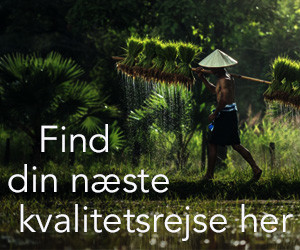







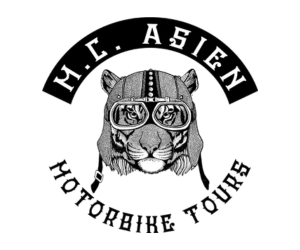


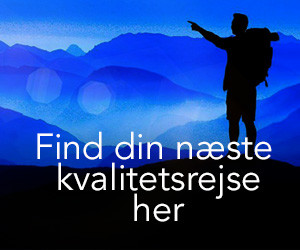

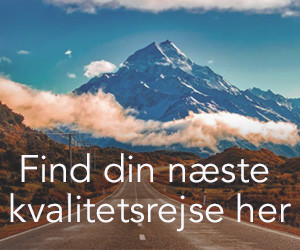


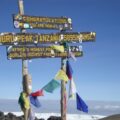




Add comment